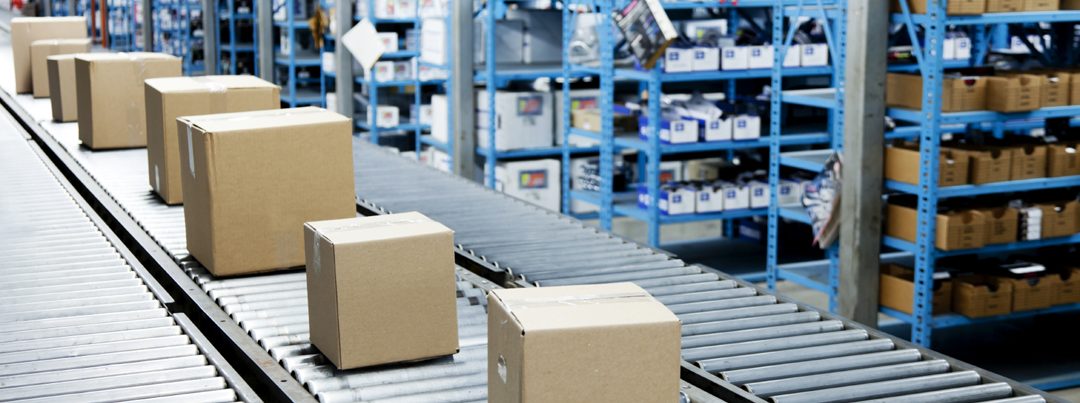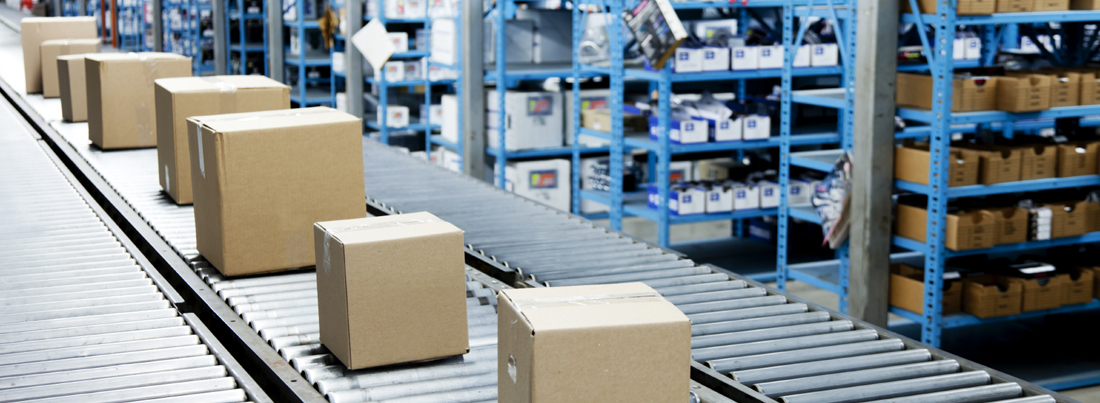
Adding or upgrading a case sealer on your packaging line can be confusing because there are many case sealer models to choose from. For a case sealer to be an efficient and cost-effective purchase for your production line, it is important that you identify the correct case sealer for your specific need.
Here are some important considerations to you get started in narrowing down your search for the right case sealer:
Box Sizes:
The size of the boxes and cases that you plan to run through the case sealer is important to know before starting your search. Every case sealer has a range (small to large) of case dimensions it can seal. This starts to reduce the available choices of case sealers to choose from. Narrow cases are especially challenging, but there are specific case sealers that can seal cases as narrow as 2.75” wide.
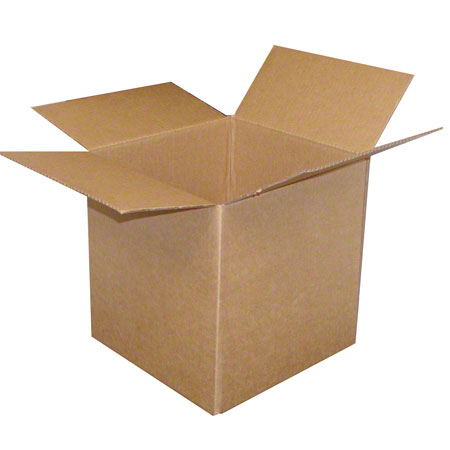
Box Types:
Case sealers are designed to seal Regular Slotted Cases (RSC’s). RSC’s have the slot where the two long flaps on the top and bottom meet in the middle when the case is erected. Call us with any questions or special needs.
How is the product packed? Rigid, soft, void fill, and over-packed? This influences the selection of a case taper.
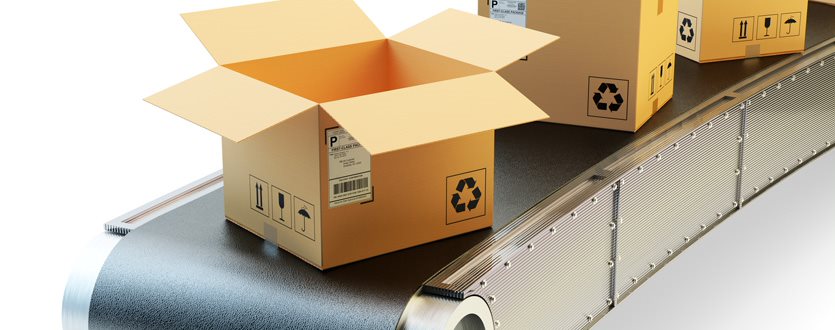
Sealing Uniform or Random Case Sizes on a Production Line:
Do you use the same size boxes through the case sealer for extended runs? If so, a UNIFORM CASE SEALER will be the correct choice for you. Uniform sealers allow you to run same size boxes through the case sealer without making machine adjustments. Once the run is completed, you can manually adjust the case sealer to accommodate the next size box run within a minute or two, by simply adjusting the top mast up and down to the correct height, and the drive belts in and out. Uniform case sealers have a higher case sealing volume than random case sealers.
Do you run multiple different box sizes at the same time on a production line? The case sealer you should use is a RANDOM CASE SEALER. Random case sealers are great for running different size boxes because they will automatically adjust to the correct height and width for each box size. No operator intervention. The case throughput is slower than a uniform case sealer.
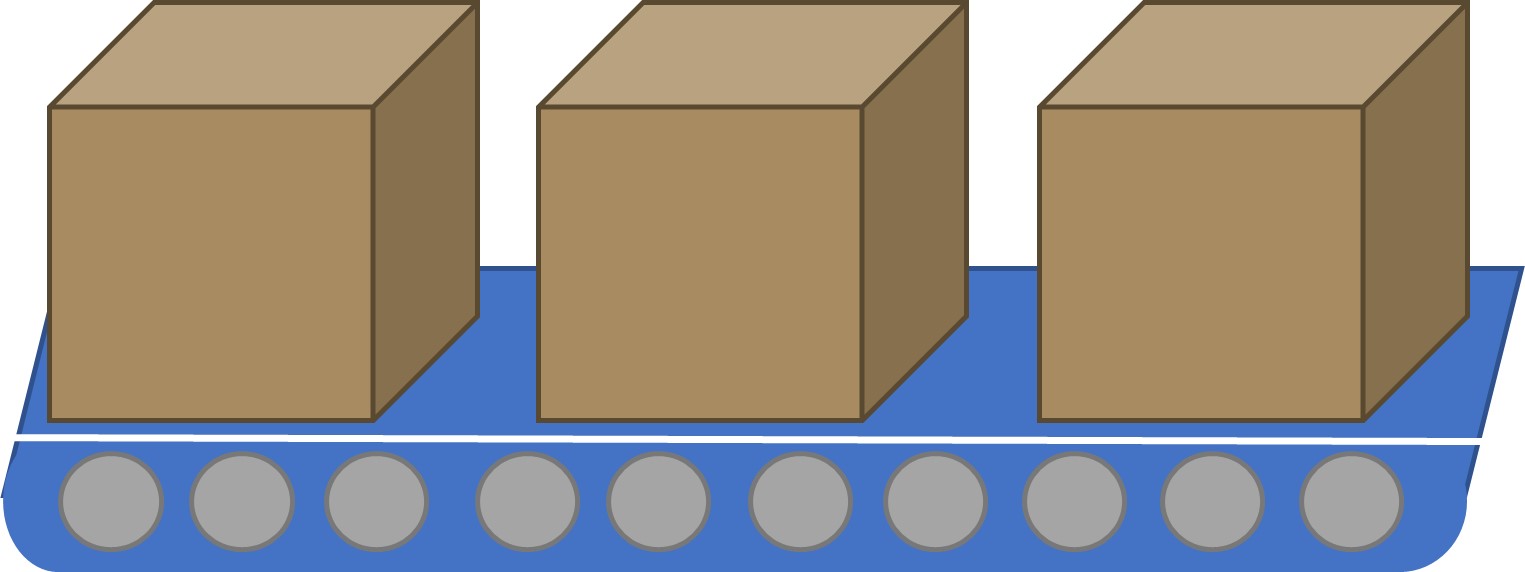
Uniform Case Sizing

Random Case Sizing
Here are some guidelines:
- When you have a tall case, you normally use a top and bottom drive case sealer.
- When you have a low-profile case, you normally use a side belt drive, unless you want to put an ink jet printhead or labeling on or by the case sealer to print on the case while it is in the case sealer. In that instance you would use a bottom belt drive because the side belt drive belts will be too high to mark a low case. The printhead or label tamp pad can’t print on the case where you want to because it has to reach over the side belt drives.
- When you have a narrow case, you normally use a side belt drive case sealer.
- When you have heavy cases, you normally use a side belt drive case sealer.
- When you have a very large case, you will need a special taper that has a top belt and side belts.
There are always exceptions to these belt drive recommendations.
Call us with your case dimensions, weights, and cases per minute, for recommendations.
Case Sealer Tape Cartridge Widths:
Depending on your case width, there are tape cartridges to seal with 1.5”, 2.0” and 3.0” tape widths. When sealing with 1.5” tape for very narrow cases, you need a modified case sealer, with narrow tape cartridges to they can fit in the tape channel, and a bottom plate so the case does not drop down. Using 1.5” wide tape and tape cartridges, you can seal a box as narrow as 2.75” wide.
Manual or Automatic Flap Closing:
Manual case sealers require an operator to manually fold down the trailing (minor) flap of the case before the operator pushes the case into the case sealer. In many instances a person is dedicated to fold that flap. This is a very expensive, continuing cost at a conservative estimate of $35,000.00 a year per person. An automatic case sealer will eliminate that cost and process.
Automatic case sealers do not require an operator. Cases are conveyed to the automatic sealer. The case enters the case sealer where all four top flaps are automatically folded. The top and bottom (or just the top) is sealed with pressure sensitive tape and the case exits the automatic sealer onto an auxiliary powered conveyor.
The payback of an automatic case sealer can be as little as six months on just a one-shift operation per production line. They are reasonably priced. Automation is the key to reducing the cost of direct labor. Call us for more information!
Stainless Steel or Powdered Coated Finish:
Stainless Steel: Some model case sealers are available with stainless steel construction. They are used in dairy and food packing operations, where water hose down and/or steam is used to remove food particles when changing over to a different product, and as part of daily sanitation procedures.
Powder Coated Finish: Most case sealers have a durable finish of this type.
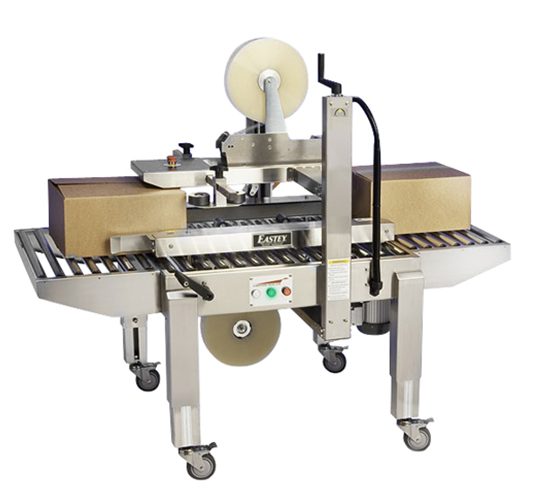
Pack Stations:
Many case sealing operations are manual. Operators erect and seal the bottom, fill cases by hand, and manually seal the case top or push them into a case sealer to seal the top.
Many packaging operations are manual. Operators erect and seal the bottom, fill cases by hand and push them into a case sealer or seal the top using a hand taper.
There are semi-automatic dedicated case erectors available which attach to many makes of case sealers. For one system: An operator opens a case, pushes it downward into a case erector, which automatically folds the bottom flaps (without sealing them). The operator packs the case and then manually pushes it into the case sealer, folding down the trailing minor flap, and the case sealer tapes the top and bottom flaps.
A second semi-automatic system has an anvil as part of the case sealer. An operator opens a case and pushes it onto an anvil which serves as a pack table which tucks the bottom four flaps. The operator then fills the case and pushes it into the case sealer it is attached to, to seal the top and bottom flaps.
Pack station semi-automatic case erectors enable you to increase the volume packed per minute by reducing the time to pack and the motion to do so. They are very reasonable in price. Call us for more information.
High Volume Manual Pack Stations (10 – 15 cases a minute):
When multiple people are required to pack shipping cases (at the rate of 10 – 15 a minute) to keep up with the output of product filler, it requires 1 – 2 dedicated people just to erect and bottom seal cases to keep up with the packers to pack out that many cases per minute.
Automated cases erectors can erect and bottom seal up to 15 cases a minute, and then with auxiliary equipment, convey those bottom sealed erected cases right to a production line. This eliminates manual case erecting, bottom sealing, and staging empty boxes bottom sealed all over the production floor. 15 cases automatically erected and bottom sealed a minute (means 75 cases in just 5 minutes) dramatically reduces direct labor cost and speeds up packing. You can match the automatic erector bottom sealer output to the case volume being packed, eliminating overflow. When you look at the annual cost savings of $35,000.00 per person, you can have a payback in 6 months for one person in 1-shift, and for 2-shift operations, a 3-month payback. Over the course of just 5 years, you will eliminate direct labor operating costs on one 8-hour shift by $175,000.00/person or more on just one production line! Call us, we can show you how to calculate this.
Special Configured Cases:
Here are some of the non-RSC cases that can be taped with special case sealers: Over-slotted container (OSC), Center special slotted container (CSSC) Full telescope half slotted container (FTHS), Full over wrapped container (FOL), and 1-2-3 Bottom with RSC top (SNAP). If you have any of these please call us.
Many retail mass merchandisers now want a label on the end panel of a case, and the side panel. Now you can comply with that requirement. Call us for details.
Another case identification option which is especially useful and cost effective for short production runs is to print shipping cases off-line, and then erect them with an automatic case erector, a pack station erector, or manually erect them.
This is done with an affordable Vertical Case Transport System (VCTS) which has a print and apply labeling system or hi-resolution ink jet printer attached to it. The hopper holds flat shippers (not erected), that are fed past the labeling or ink jet printer which can print on 1 – 4 sides of your case at 30 – 50 cases a minute, depending upon the case size. After banding them, they can be taken to the automatic case erector, a semi-automatic case erector, or the packing line for erecting and sealing.
Using a VCTS can enable you to:
- Eliminate buying preprinted cases (except very long runs).
- Enables you to print cases in any quantity, no more overruns or under runs of preprinted cases. Print “just in time” quantities.
- No case waste – throwing away preprint overruns and old cases that dry out.
- Dramatically frees up warehouse space required when storing preprinted cases. Same case quantity used per year, but storing blank cases, you only use 25% of the space needed for multiple preprints.
- Eliminates the direct labor to store and retrieve preprinted cases.
- Enables you to print on 1 – 4 sides of your cases in any quantity quickly when you need them.
- When you do the math, a VCTS can payback its cost quickly. Call us for details.
Accumulation Tables:
Accumulation tables are labor saving way to automatically accumulate containers from a filling/ feeding device to enable one person to pack containers into a case just before case sealing. If a product surge occurs, they collect the bottles, cans, jars, or other containers. This can prevent product damage or jam ups. Frequently packing is done right off the accumulation table. They are also used to automatically feed empty containers to a short conveyor which conveys them to a filler.
Accumulation tables are available in 36” and 48” diameter tables, with a powder coated finish or in stainless steel for food and pharmaceutical operations. They have adjustable side guides and sidewalls. They can turn clockwise or counterclockwise and are adjustable in height. If you want more information about them call us.

